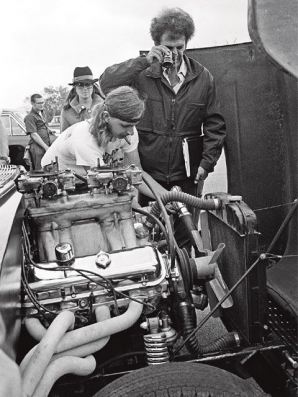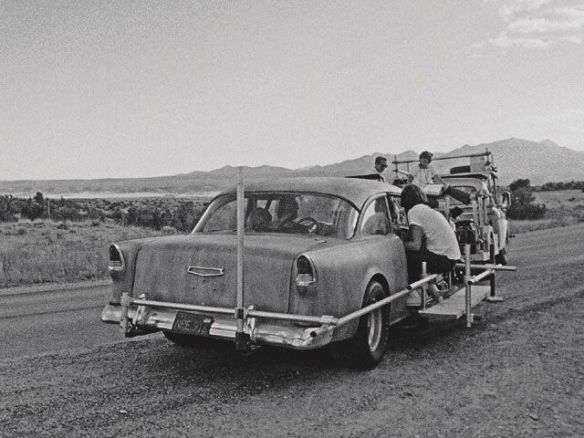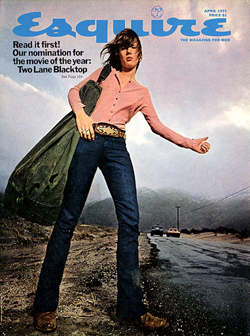Coming out of Roger Corman’s America International Pictures, director Monte Hellman made his first mark as an auteur in Europe with two low budget slow-motion Westerns, Ride the Whirlwind (1965) and The Shooting (1966), both featuring Jack Nicholson.
Financing for his next film, Two-Lane Blacktop, crashed when CBS Cinema Center cancelled the deal while Hellman was out on the road scouting locations. Back in Hollywood, the director approached a number of studios; only Universal would bite, and then only if he could do it for under $950,000. He reportedly made it for $850,000.
The original script, written by Will Corry, needed work. Hellman hired Rudolph Wurlitzer, a New York City writer who had published the year before “Nog,” a hallucinogenic road novel that Newsweek described as “somewhere between Psychedelic Superman and Samuel Beckett.” Wurlitzer, who read about five pages of the screenplay, tossed it aside and rewrote it entirely, retaining only the cross-country race theme.
For inspiration, Wurlitzer flew out to Los Angeles and checked into the Chateau Marmont. There he spent four weeks poring over drag-race magazines and mingling with street racers in the San Fernando Valley.
Filming took place on the road, literally; no studio sets were involved. It took approximately seven weeks of continuous travel, from Los Angeles to a small airport in Athens, Tennessee, and shot mostly in sequence.
Between August and October 1970, the crew of about 35 hit the road in a caravan of vans, busses, a Winnebago and a flatbed trailer conveying three ‘55 Chevys. They honed to the two-lane, capturing a vernacular roadside America set along Route 66, US 54, US 89 and US 70, along with a supporting cast of state highways.
Esquire put the movie on its April 1971 cover, publishing the entire screenplay and hailing it the “Movie of the Year.” It premiered two months later in New York City on July 4th weekend. But one Universal executive, unhappy with the product, “pulled the plug on advertising,” Hellman claims. It fell like a crankcase.
Despite its inauspicious start, Vincent Canby, film critic for New York Times, called it a “remarkably engaging movie, mostly in spite of, rather than because of, its metaphorical aspirations.” At the local level it reviewed well, though it baffled some. Micheline Keating, writing for the Tucson Daily News, called it “probably the best of the motorcycle films, with a standout performance by Warren Oates, but marred by an Easy Rider ending.”
After its release, Esquire retracted its nomination, stating “The screenplay was wonderful…but the film is vapid.” By the next summer, it was playing at drive-ins across America, sometimes with Z-grade double-features—a drive-in in Columbus, Nebraska packaged it with the soft-porn Night Call Nurses.
It continued to play in the 1980s, mostly on late-night TV. It came out later on laserdisc at its correct aspect ratio—important for appreciating Hellman’s horizontal framing. In 2000, director Richard Linklater introduced the film at a South by Southwest Hellman retrospective, calling it the “purest American road movie ever.” The Criterion Collection released a definitive two-disc set in 2007, cementing its significance—the movie frequently making critics’ best-of lists.
Copyright © John W. Murphey, 2011



